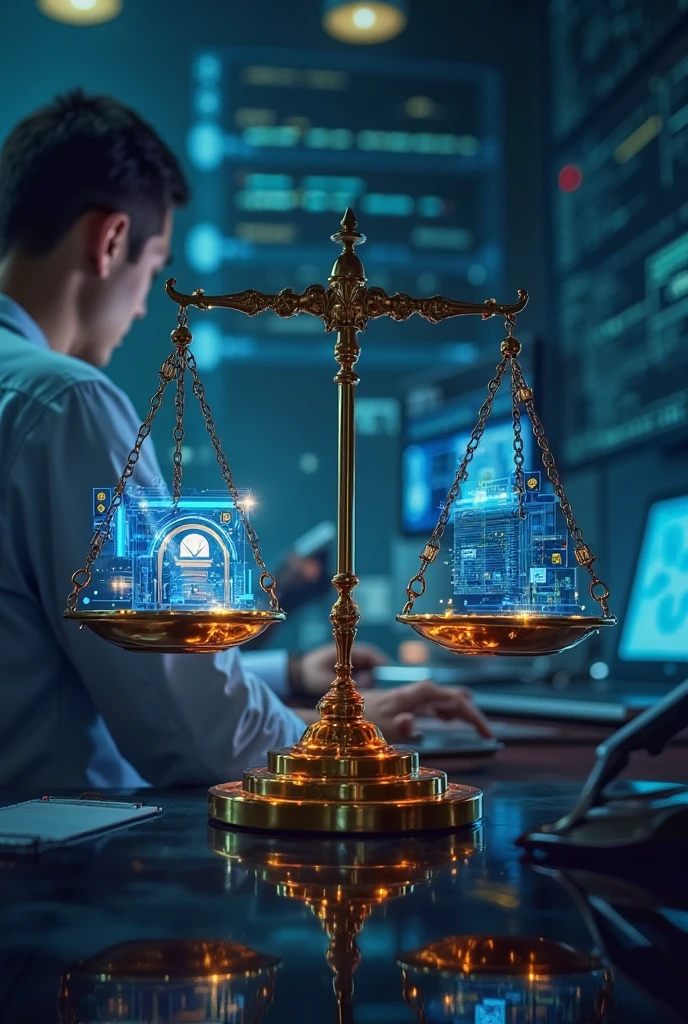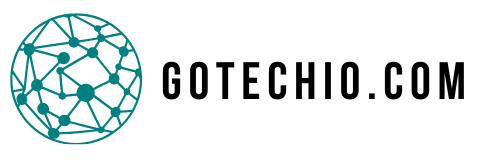Introduction
Last semester, Dr. Wei Chen, a brilliant quantum computing researcher from Singapore, was thrilled to receive an invitation to join a prestigious research program at MIT. After months of preparation, he arrived at the U.S. embassy for his visa interview, confident and excited. Three hours later, he left confused and concerned. His application was placed on administrative processing—a delay that would ultimately stretch to nearly three months, jeopardizing his position and research timeline. The reason? His expertise fell under a little-known but powerful screening mechanism called the Technology Alert List.
In today’s interconnected world, the exchange of knowledge and technology flows across borders at unprecedented speeds. However, not all technological transfers are viewed equally by governments concerned with national security. The Technology Alert List (TAL) represents one of the most significant tools the United States employs to scrutinize and control the movement of sensitive technologies and expertise. Whether you’re an international student, a visiting researcher, a hiring manager, or a business professional, understanding the implications of this list could save you months of delays and potential complications.
The Technology Alert List serves as a guideline for U.S. consular officers when reviewing visa applications for activities involving sensitive technological fields—activities that might pose security concerns if certain knowledge or capabilities were transferred inappropriately.
Background and History of the Technology Alert List
Origins and Evolution
The Technology Alert List was first introduced by the U.S. Department of State in November 2000 as a response to growing concerns about unauthorized technology transfers. Following the September 11, 2001 terrorist attacks, the list was significantly updated and expanded in August 2002, reflecting heightened national security priorities in the post-9/11 landscape.
Originally developed during the Cold War era, the screening process for sensitive technology transfers focused primarily on applicants from Warsaw Pact countries, China, and Vietnam. These early procedures were known as SPLEX, CHINEX, and VIETEX. In January 1998, these disparate systems were consolidated into the VISAS MANTIS program—a global screening mechanism designed to prevent the illegal transfer of controlled technology worldwide.
Purpose and Implementation
The Technology Alert List serves four primary security objectives:
- Stemming the proliferation of weapons of mass destruction and missile delivery systems
- Restraining the development of destabilizing conventional military capabilities in certain regions
- Preventing the transfer of arms and sensitive dual-use items to terrorist states
- Maintaining U.S. advantages in militarily critical technologies
When a visa applicant’s proposed activities in the United States involve any of the sensitive fields on the Technology Alert List, consular officers may initiate a Security Advisory Opinion (SAO) through the Visas Mantis program. This interagency review process involves consulting with various security and intelligence agencies to assess potential security risks before a visa decision is made.
According to a 2004 report by the U.S. Department of State’s Office of Inspector General, these reviews have become an integral part of the U.S. government’s broader export control system, which aims to limit the transfer of goods, technology, and sensitive information that could compromise national security.
Key Categories on the Technology Alert List
The Technology Alert List currently contains 15-16 categories of sensitive technologies that receive enhanced scrutiny during the visa application process. These categories represent fields where technological knowledge could potentially have dual-use applications—both civilian and military. Let’s examine some of the most significant categories:
Advanced Computing and Microelectronics
This category encompasses supercomputing technologies, advanced microprocessors, quantum computing, and other cutting-edge computing innovations. The concern centers on computing capabilities that could be used for weapons design, cryptographic applications, or military simulations. Companies like Intel, NVIDIA, and IBM frequently navigate these restrictions when hiring international talent or collaborating with foreign researchers.
Nuclear Technology
Perhaps the most strictly controlled category, this includes any technology related to nuclear physics, nuclear engineering, and the development of nuclear materials—whether for peaceful energy production or potential weapons applications. The International Atomic Energy Agency (IAEA) works alongside national governments to monitor and regulate these technologies globally.
Chemical and Biotechnology Engineering
This category covers technologies associated with the development or production of biological agents, toxins, and pathogenic organisms. The COVID-19 pandemic has heightened awareness of the dual-use nature of biotechnology research, with legitimate medical research sometimes utilizing the same techniques that could potentially be misused for bioweapons development.
Artificial Intelligence and Robotics
A relatively newer addition to security concerns, this category focuses on autonomous systems, pattern recognition technologies, and advanced robotics that could have military applications. As companies like Boston Dynamics develop increasingly sophisticated robotic systems, the line between commercial and military applications continues to blur.
Real-Life Applications and Impact
Impact on International Students and Researchers
For international students and scholars, the Technology Alert List can create significant hurdles, particularly for those studying or researching in STEM fields. According to data from the Institute of International Education, approximately 52% of international students in the U.S. pursue degrees in fields that potentially intersect with TAL categories.
Dr. Maria Santos, an international student advisor at Stanford University, explains: “We regularly counsel students whose research touches on TAL areas to apply for visas well in advance—sometimes 4-6 months before their intended start date. Even then, delays can disrupt academic progress and research timelines.”
The most common manifestation of TAL-related issues is administrative processing delays, which can range from a few weeks to several months. During this time, applicants must remain outside the United States, often putting their academic or professional plans on hold.
Effects on Business and Innovation
Technology Companies
Tech companies recruiting global talent face particular challenges when positions involve TAL-listed technologies. Google, Microsoft, and other tech giants have dedicated compliance teams to navigate these restrictions and ensure that international hiring doesn’t inadvertently trigger export control violations.
Recruitment timelines must factor in potential visa delays, and some companies have reported losing qualified candidates to competitors in other countries with less restrictive technology transfer policies. A 2024 survey by the National Foundation for American Policy found that 78% of tech companies reported difficulties or delays in bringing critical talent to the U.S. due to technology transfer concerns.
Research Institutions
Universities and research institutions must carefully balance international collaboration with compliance requirements. Many have established dedicated export control offices to review research proposals, visiting scholar arrangements, and international partnerships for potential TAL implications.
Dr. James Wilson, Director of Research Compliance at MIT, notes: “We’ve had to implement comprehensive screening processes for international collaborations, especially when they involve advanced technologies. While necessary for security, these processes add administrative burden and can slow the pace of innovation.”
Impact on Global Collaboration
The Technology Alert List has significant implications for international scientific collaboration. Major research projects in fields like quantum computing, advanced materials, and space exploration often require multinational teams, creating complex compliance challenges.
Organizations like CERN (European Organization for Nuclear Research) have developed sophisticated protocols to enable international collaboration while respecting various national security restrictions, including those stemming from the U.S. Technology Alert List.
Future Outlook
Evolving Security Landscape
As technology continues to advance rapidly, the Technology Alert List is likely to evolve in response to emerging threats and capabilities. Several trends are expected to shape its future development:
- Expansion of AI and Quantum Computing Controls: As these technologies mature and their potential military applications become clearer, scrutiny in these areas is likely to increase.
- Biotechnology Focus: The convergence of computing and biology in areas like synthetic biology and genomics will likely receive enhanced attention due to potential biosecurity implications.
- Emerging Technology Identification: The U.S. government is working to better identify “emerging technologies” that may warrant early controls before they become widely available.
Geopolitical Considerations
The application of the Technology Alert List is inherently tied to geopolitical relationships. Countries designated as state sponsors of terrorism (currently including North Korea, Iran, Syria, and Cuba) face the most stringent scrutiny, while applicants from countries with complex security relationships with the U.S.—particularly China and Russia—often experience more frequent TAL-related delays.
As global technological competition intensifies, particularly between the U.S. and China, the Technology Alert List may become an increasingly important tool in what some experts describe as a “techno-nationalist” approach to maintaining technological advantages.
Challenges and Limitations
Balancing Security and Innovation

Perhaps the greatest challenge associated with the Technology Alert List is striking the appropriate balance between legitimate security concerns and maintaining the open exchange of ideas that drives innovation. Overly restrictive controls can impede scientific progress and economic growth, while inadequate scrutiny could enable technology transfers that pose genuine security threats.
The National Academies of Sciences, Engineering, and Medicine highlighted this tension in a recent report, noting that “policies designed to protect national security must be carefully crafted to avoid unintended consequences for U.S. leadership in science and technology.”
Consistency and Predictability Issues
Consular officers have significant discretion in applying Technology Alert List screening, leading to inconsistent outcomes for similar cases. An applicant might sail through the process at one U.S. consulate but face months of delays at another, even with identical backgrounds and proposed activities.
This unpredictability creates challenges for:
- Universities planning academic terms with international faculty and students
- Companies making hiring decisions and project timelines
- Research collaborations with critical deadlines
- Individual career planning and personal circumstances
Potential Solutions
Several approaches could help address these challenges:
- Increased Transparency: More detailed guidance on what triggers TAL concerns could help applicants better prepare and potentially avoid unnecessary reviews.
- Process Streamlining: Technology solutions could help expedite security reviews while maintaining thoroughness.
- Tailored Approaches: Risk-based screening that considers an applicant’s complete history of U.S. interactions could reduce redundant reviews for established researchers and professionals.
- International Coordination: Harmonizing technology control approaches with allies could reduce regulatory burdens while maintaining security objectives.
Conclusion
The Technology Alert List represents a critical but often overlooked component of the complex system governing international technology transfers and knowledge exchange. As we navigate an era of rapid technological change and shifting geopolitical relationships, understanding the TAL’s purpose, scope, and implications becomes increasingly important for students, researchers, businesses, and policymakers.
While security concerns driving the Technology Alert List are legitimate, its implementation presents real challenges for global innovation ecosystems. The most successful approaches will likely be those that thoughtfully balance security imperatives with the benefits of international collaboration and talent mobility.
For those potentially affected by the Technology Alert List—whether as visa applicants, hiring managers, or research coordinators—advance planning, expert guidance, and realistic timelines are essential. As one immigration attorney specializing in technology fields noted, “Understanding is the first step to successful navigation.”
Share your experiences with technology transfer restrictions or visa security reviews in the comments below, or subscribe for more insights on navigating the complex intersection of technology, security, and global mobility.
Frequently Asked Questions
What exactly is the Technology Alert List and how does it affect visa applications?
The Technology Alert List (TAL) is a screening tool used by U.S. consular officers when reviewing visa applications for activities involving sensitive technological fields. If your proposed activities in the U.S. involve any of the 15-16 categories on the Technology Alert List, your application may be subject to additional security screening through the Visas Mantis program. This can result in delays ranging from a few weeks to several months while various U.S. government agencies review your background and intended activities. The TAL is designed to prevent unauthorized transfers of sensitive technologies that could potentially impact national security.
Which fields of study or work are most likely to trigger Technology Alert List screening?
Fields most likely to trigger Technology Alert List screening include nuclear engineering, advanced computing/quantum computing, robotics/artificial intelligence, chemical and biological engineering, aerospace engineering (particularly propulsion systems), advanced materials science, cryptography/cybersecurity, and certain types of sensor technology. However, it’s important to note that the specific application of your work matters more than the general field. For example, a computer scientist working on commercial software might face less scrutiny than one developing encryption algorithms, despite being in the same general discipline. The dual-use potential of your specific expertise is the primary concern for consular officers applying the Technology Alert List.
Does the Technology Alert List only affect people from certain countries?
While the Technology Alert List applies to visa applicants from all countries, the likelihood and intensity of screening varies based on nationality. Applicants from countries designated as state sponsors of terrorism (currently North Korea, Iran, Syria, and Cuba) face the most stringent scrutiny—consular officers must refer any case involving TAL technologies from these countries for additional review. Applicants from countries with complex security relationships with the U.S., particularly China and Russia, also experience more frequent TAL-related reviews. However, nationals from any country, including close U.S. allies, may face additional screening if their work involves sensitive technologies on the list.
How can I reduce delays related to the Technology Alert List when applying for a U.S. visa?
To minimize Technology Alert List-related delays, first determine if your work potentially intersects with TAL categories. If it does, prepare thoroughly for your visa interview with clear, non-technical explanations of your research or work that emphasize civilian applications. Bring a detailed letter from your U.S. sponsor explaining the nature and purpose of your activities. Apply well in advance—at least 3-4 months before your intended travel. If administrative processing is initiated, stay in regular contact with your U.S. sponsor and consider having them reach out to the relevant U.S. agencies through established channels. Working with an immigration attorney experienced in technology fields can also help navigate the process more effectively.
What is the relationship between the Technology Alert List and U.S. export control regulations?
The Technology Alert List and U.S. export control regulations are complementary components of the same broader system designed to protect sensitive technologies. While export control regulations (including ITAR and EAR) govern the physical export of items and the release of controlled technical data, the Technology Alert List focuses on controlling the “deemed export” that occurs when foreign nationals gain access to controlled technologies through their physical presence in the U.S. Both systems share similar technology categories of concern and security objectives. In fact, if you require an export license for your work in the U.S., you are very likely to trigger Technology Alert List screening during your visa application process, as the underlying security concerns are aligned.


[…] Excellence Amethix Technologies: Pioneering Intelligent Solutions in the AI Landscape Technology Alert List: Navigating the Complex World of Sensitive Technology Transfers Eco-Friendly Technologies for Sustainable Living: Powering a Greener Future 10 […]